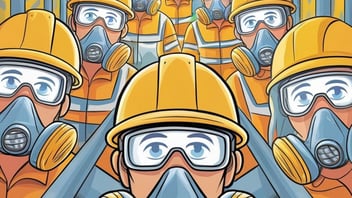Confined Space safety is crucial in many industries; online training offers a flexible, comprehensive way to ensure compliance and protect workers.
Why Confined Space Safety Training is Essential
Confined Space can pose significant hazards, including limited entry and exit points, lack of ventilation, and potential exposure to harmful substances. Ensuring that workers are properly trained to recognize these dangers and respond appropriately is vital for their safety and well-being.
Safety training helps mitigate risks in confined space work by educating employees on proper procedures, emergency responses, and the use of protective equipment. This specialized knowledge not only reduces the likelihood of accidents in such challenging environments but also ensures compliance with industry regulations.
Benefits of Online Training for Confined Space Safety
Online training provides unparalleled flexibility, enabling workers involved in confined space work to learn at their own pace and on their own schedule. This is particularly beneficial for industries with variable shifts, remote locations, and the unique challenges of confined spaces.
The interactive nature of online courses can enhance engagement and retention of critical safety information. Additionally, online training platforms often offer up-to-date content and can be easily updated to reflect the latest regulatory changes and best practices.
Key Components of Effective Confined Space Online Training
Effective online training programs should cover a range of essential topics, including hazard identification, risk assessment, and emergency response protocols. Interactive modules and real-world scenarios can help reinforce learning.
Other key components include detailed instructions on the proper use of personal protective equipment (PPE), ventilation techniques, and the importance of continuous monitoring for hazardous conditions. Regular assessments and certification upon course completion ensure that learners have thoroughly understood the material.
How to Choose the Best Confined Space Online Training Program
When selecting an online training program, it's important to consider factors such as accreditation, content comprehensiveness, and user reviews. Look for courses that are developed by industry experts and are compliant with relevant safety standards and regulations.
Accessibility and support are also crucial. Ensure the platform is user-friendly and offers customer support to address any technical issues or questions. Additionally, check if the program provides ongoing updates and resources to keep your team informed of the latest safety practices.
Real-Life Applications and Success Stories
Many organizations have successfully implemented online training programs to enhance their Confined Space safety protocols. For instance, a manufacturing company reported a significant reduction in confined space incidents after their workforce completed an interactive online training course.
Another success story comes from a construction firm that saw improved compliance and safety awareness among their employees, leading to a safer work environment and fewer regulatory fines. These examples demonstrate the tangible benefits of investing in high-quality online safety training.
Frequently Asked Questions About Confined Space Online Training
One common question is, 'How long does it take to complete an online training course?' Most programs are designed to be flexible and can be completed at the learner's pace, typically ranging from a few hours to a couple of days.
Another frequently asked question is, 'Will I receive a certification upon completion?' Yes, reputable online training programs provide certification that attests to the learner's understanding of confined space safety principles and practices.
Future Trends in Confined Space Safety Training
The future of Confined Space safety training is likely to see increased integration of virtual reality (VR) and augmented reality (AR) technologies. These tools offer immersive, hands-on experiences that can better prepare workers for real-life scenarios.
Additionally, advancements in artificial intelligence (AI) could lead to more personalized training programs that adapt to the learner's progress and provide targeted support where needed. These innovations promise to make confined space safety training even more effective and engaging.






Leave a Comment